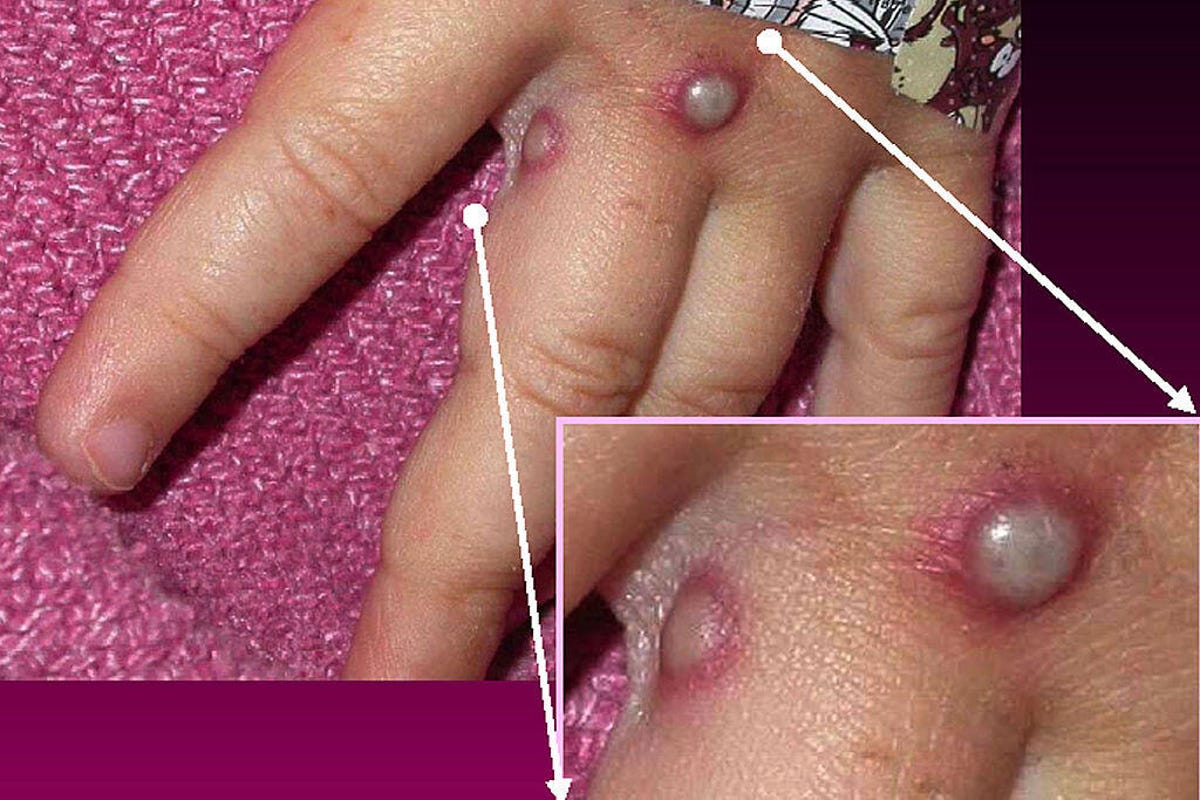Monkeypox has been endemic in western and central Africa for years but its spread to dozens of countries where it’s not usually reported has led the World Health Organization to declare it a global health emergency.
As of Aug. 6, there were more than 27,800 confirmed cases in countries that have not historically reported monkeypox, according to the US Centers for Disease Control and Prevention, including more than 7,500 in the US alone.
Health officials are particularly concerned because the current outbreak is presenting somewhat different symptoms, including painful rashes, blisters and open sores. And most cases are among men who sleep with men, which has not been the case in Africa.
Here are the symptoms to look for, including early signs of monkeypox and how the current outbreak is presenting differently than previous ones. For more, read about monkeypox testing, transmission and treatment.
What is monkeypox?
Monkeypox is a virus in the same family as the variola virus, which causes smallpox, though it is milder and rarely fatal.
It was first identified in lab monkeys in 1958, and the first documented cases among humans were in 1970, among half a dozen children in Central Africa. Today, monkeypox is endemic in parts of Central and West Africa, especially the Democratic Republic of the Congo.

A monkeypox virus particle under the microscope.
Smith Collection/Gado/Getty ImagesInitially, transmission mostly came from contact with animals, but by 1996, the majority of cases in an outbreak in the Congo were from human-to-human contact.
Read more: What Gay and Bisexual Men Need to Know About Monkeypox
The first reported cases of monkeypox in the US were in 2003, all of which were linked back to infected prairie dogs.
Fatality rates are very low, between 1% and 10%, and deaths usually occur in young children and those with compromised immune systems due to HIV.
What are the early signs of monkeypox?
While many people won’t realize they have monkeypox until the telltale rash emerges, some early signs can include flu-like symptoms:
- fever
- headache
- tiredness
- sore throat
- muscle ache
- swollen lymph nodes.
Symptoms of monkeypox are similar to, but usually much milder than, those of smallpox, which the WHO declared eliminated in 1980.
What are the symptoms of monkeypox?
Monkeypox can manifest as a rash or individual sores that look like pimples or blisters and can appear almost anywhere on the body, including the hands, face, chest, groin and inside the mouth or anus.
Lesions can be flat or raised and full of clear or yellowish fluid and will eventually dry up and fall off.
How are monkeypox symptoms different from previous outbreaks?
CDC director Rochelle Walensky said in a June briefing that, historically, after reporting flulike symptoms, “a characteristic, often diffuse rash appears on multiple sides of the body, often on the face, arms and hands.”
But in more recent cases in the West, some patients have developed a more localized rash — often around the genitals or anus — that is quite painful. Others are developing blemishes that resemble a pimple or blister as opposed to a widespread rash. And flulike symptoms may never emerge.

Blisters on the hand of a patient with monkeypox.
Courtesy of CDC/Getty ImagesSome patients in the US have reported proctitis, a painful inflammation of the rectal lining that can cause diarrhea, bleeding and discharge, according to the Mayo Clinic, as well as a continuous feeling of needing to use the bathroom.
The CDC has warned that the differing presentation can cause monkeypox to be misdiagnosed or missed altogether.
Read more: How Do I Get the Monkeypox Vaccine
How long do monkeypox symptoms last?
The illness typically lasts two to four weeks, though the incubation period ranges from five to 21 days, according to the CDC. That means people will most likely develop symptoms within three weeks of being exposed.
Unlike COVID-19, monkeypox is generally understood to not be contagious during the incubation period. Generally, you can spread monkeypox until the sores heal and a new layer of skin forms.
Transmission can occur via direct skin-to-skin contact with lesions, rashes, scabs or fluids. It can also be transmitted by touching surfaces, clothing or other objects used by an infected person.
Contact with respiratory secretions — such as via coughing or sneezing — can also spread the virus, though it’s not known yet if transmission can occur via semen or vaginal fluid.
The information contained in this article is for educational and informational purposes only and is not intended as health or medical advice. Always consult a physician or other qualified health provider regarding any questions you may have about a medical condition or health objectives.